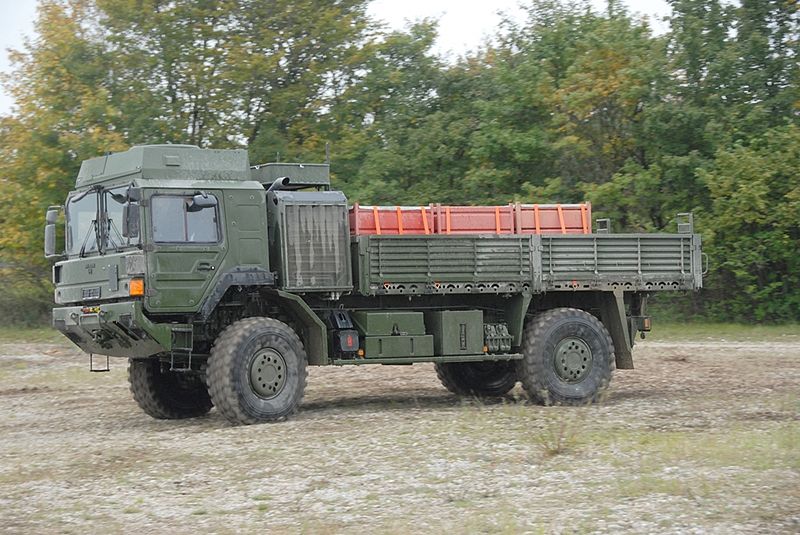We're not trying to build a 1,000,000 man army. All we need is 20 to 30,000 to fill out what's there.
I think your view of immigrants is skewed. Take a look at the nominal rolls of some of the units in Toronto and Vancouver some day. There's plenty of diversity and if you give them a unit to be proud of the numbers will swell.
The point is we need to exploit those population centres. We keep whinging that its too expensive for a soldier there but the urban populations keep swelling at the expense of the rural ones. We just need to offer stability so that people's spouses can have jobs and they can stay near their families. The trick is to design an annual training cycle that works around urban basing. That's easy for reservists and a bit harder but by no means impossible for the regulars.

I know that a diverse population of people is serving in the Forces. But I doubt if many of them are immigrants unless they, like myself, were brought over as children and raised in Canada. They're parents are considerably less likely to be suitable recruiting fodder. My parents certainly were not. My Dad had done his bit in the UK and had little interest and no time to pursue any endeavours outside of establishing his family securely in this country.
That is the problem to which I refer when I suggest that the major population centres, with their high percentage of recent arrivals, may not be as fruitful a recruiting ground as perhaps anticipated.
TMV are certainly major concentrations of Canadians but what can we expect from them? If half the population of Toronto are immigrants then I would suggest that that population would skew upwards in age from the age at which they immigrated.
The large urban centre of Toronto has the largest proportion of immigrants overall. In 2021, close to half (46.6%) of the population living in the Toronto CMA were immigrants. Immigrants made up more than half of the residents of four municipalities in the Toronto CMA: Markham (58.6%), Richmond Hill (58.2%), Mississauga (53.2%) and Brampton (52.9%).
Vancouver had the second-largest proportion of immigrants, at 41.8%. Within the large urban centre of Vancouver, immigrants accounted for three-fifths (60.3%) of the population of Richmond and half (50.4%) of Burnaby's population.
Immigrants accounted for 23.0% of the population in 2021, the largest proportion in over 150 years. Among them, 1.3 million new immigrants were admitted from 2016 to 2021. Coming from many countries, immigrants settle throughout Canada and contribute to the growth of the population and the...

www150.statcan.gc.ca
According to
2021 census data, nearly two-thirds of Canada’s immigrants (64.2%) between 2016 and 2021 fell into the age range that this country defines as being of core working age (25 to 54 years old).
According to Statistics Canada, “the working-age population [in Canada] — persons aged 15 to 64 — has never been older”. What’s happening with Canada’s working population? In fact, more than 20% of people that Canada categorizes as being of working age are between the ages of 55 and 64, which...

www.cicnews.com
Just over 1 in 10 recent immigrants were youth and young adults aged 15 to 24 (10.9%), while most (64.2%) were in the core working age group of 25 to 54. A much smaller proportion of recent immigrants (3.6%) were aged 55 to 64.
Children younger than 15 years of age, who may one day join the labour force, represented 17.1% of recent arrivals to Canada. Immigration over the near term will ease the labour force crunch in Canada.
Immigrants accounted for 23.0% of the population in 2021, the largest proportion in over 150 years. Among them, 1.3 million new immigrants were admitted from 2016 to 2021. Coming from many countries, immigrants settle throughout Canada and contribute to the growth of the population and the...

www150.statcan.gc.ca
The half of the population that is not immigrant tends to skew upwards in age due to low rates of reproduction.
The half of the population that is immigrant will also tend to skew upwards from the age of immigration.
In both cases the pool of potential recruits is small.
The immigrant population presents other challenges as well.
First and foremost is that they have been sold Canada as a secure destination, safe from war, where one can comfortably raise a family and make a profit. They are not only too busy to engage with the military, they are disinclined to engage with the military and, in addition, they will have little sense of any Canadian military. In fact they may have negative perceptions of soldiering in general.
Those are the Weaknesses and Threats the CAF recruiting process faces.
The Strengths and Opportunities the CAF has/had is its domestic reputation and its ability to engage with the public. To be frank the domestic reputation today is not as good as it was. For a variety of reasons that need no rehearsing. And it is losing contact with large cohorts of the public that might be of use to it.
Major league sports spends a large portion of its marketing budget in building up fan clubs and minor leagues and amateur leagues precisely so that those afficionados will spend money that makes its way into to pockets of owners and players.
The Cadets are the juniors. The Militia is/was that minor league home of the afficionado. It supplied the occasional body for call up to the Majors. But more importantly, in my opinion, it supplied a body of taxpayers that had personal insight into the needs of the CAF and were willing to proselytize on its behalf. And that happened in every town with one of Sam Hughes's armouries.
As to your comment about not wanting a million man army.....
Where are you going to find that reserve to fill your national emergency force that you wish to have manning howitzers in storage?
One of the reasons Sam built those armouries all the way across the country, a young country with an even more diverse immigrant population than now if you consider the high percentage of towns with single country and single religion origins on the prairies, one of the reasons was to engage that immigrant population in the defence of a country that was trying to establish itself as distinct from both the UK and the US. Another reason was to establish a Federal Government imprint on those new communities. It is why it invested in town clocks and sandstone post offices and land registries. They encouraged a sense of permanence in dusty and cold little places where people had difficulty understanding each other. And the armouries were places that counteracted the churches and the social clubs. The churches and the social clubs encouraged diversity right enough. They created little insular places of comfort where the like-minded gathered and talked to themselves.
The armouries were different. They were meeting places for Ukrainians and Brits and Jews, Catholics and Masons. They assisted in breaking down barriers.
And they built support for new uniforms, new rifles, new machine guns, new artillery pieces, new wagons and tents, new solar topees...
That is what the armouries, that is what the Militia, brought to the making of modern Canada. That is what is being lost as the CAF turtles. Turns in on itself.
I understand why the CAF is doing it. When money is short it is difficult to think of anything but the short term. Growth is not a priority for those under threat. But it needs to be. That is where the emphasis on recruiting and reconstitution has it right I think. But the vision has to be broader than a narrow focus on maintaining one single deployable brigade group in Latvia.
In short, I guess, I am arguing for more marketing, more fans, more "unpaid" lobbyists to help you build the support necessary to field a credible national defence.
And part of that effort has to be making the CAF relevant to Canadians.
----
Working through this, it occurs to me that the success of the US defence establishment has been in selling pessimism since the Reagan years and Caspar Weinbergers slick threat assessment coffee table books. The books that created the image of the Russians that we are only now discovering was, or at least is now, "overstated".
That image is directly at odds with the optimistic "sunny ways" that our current government is so keen to promote.
Canada is not under threat. It is Safe, Secure and Engaged.














